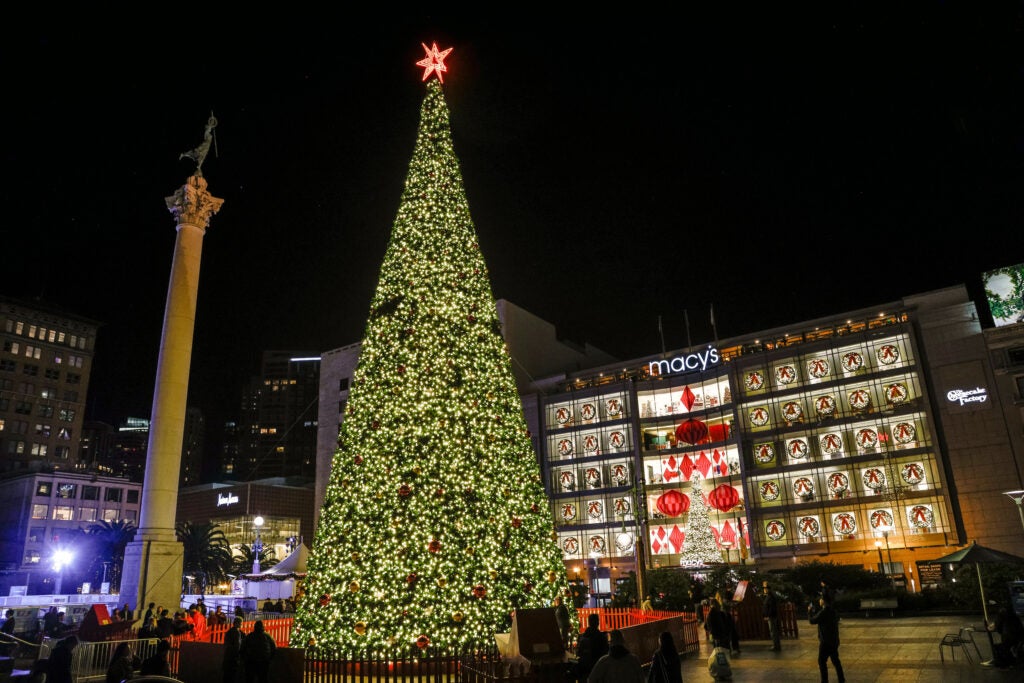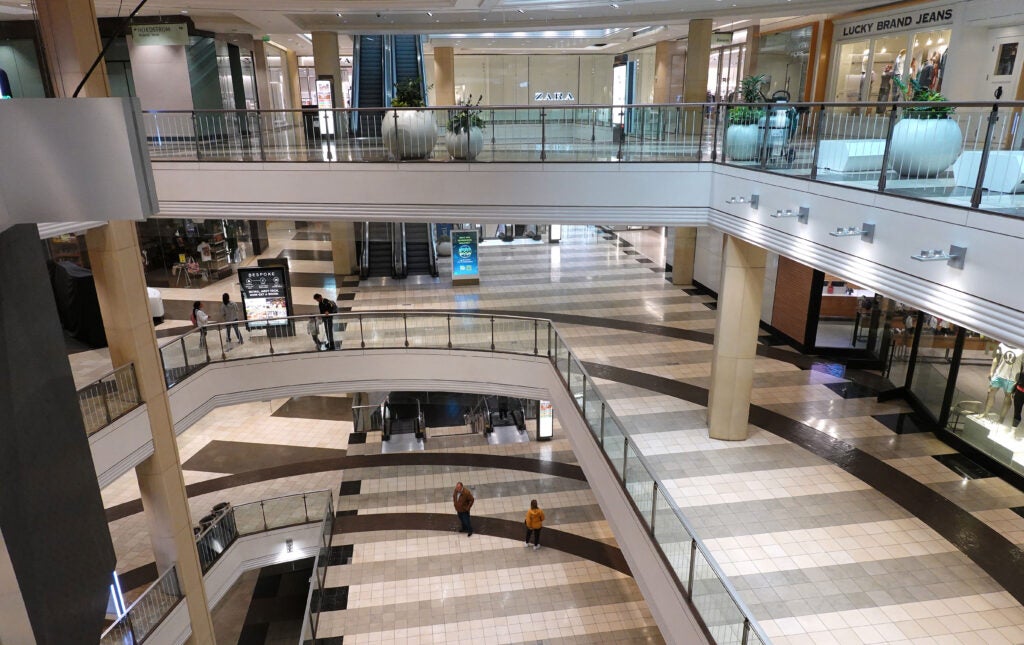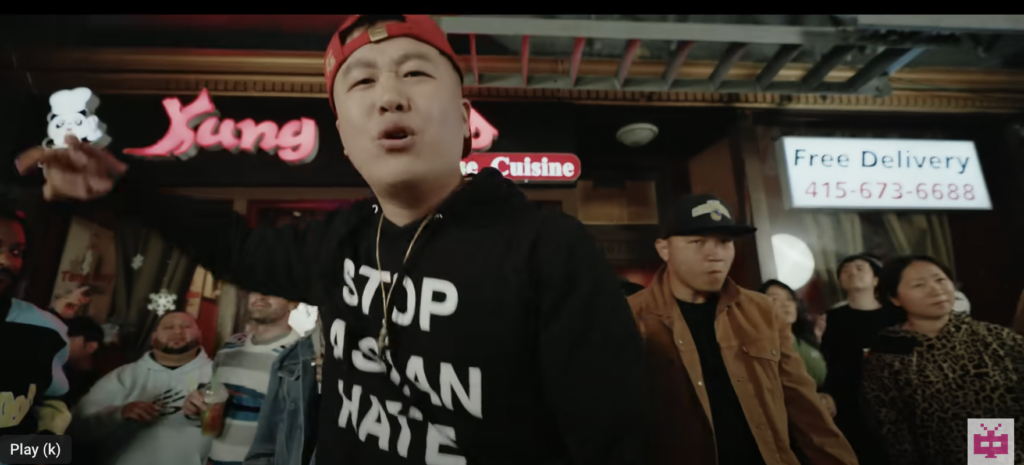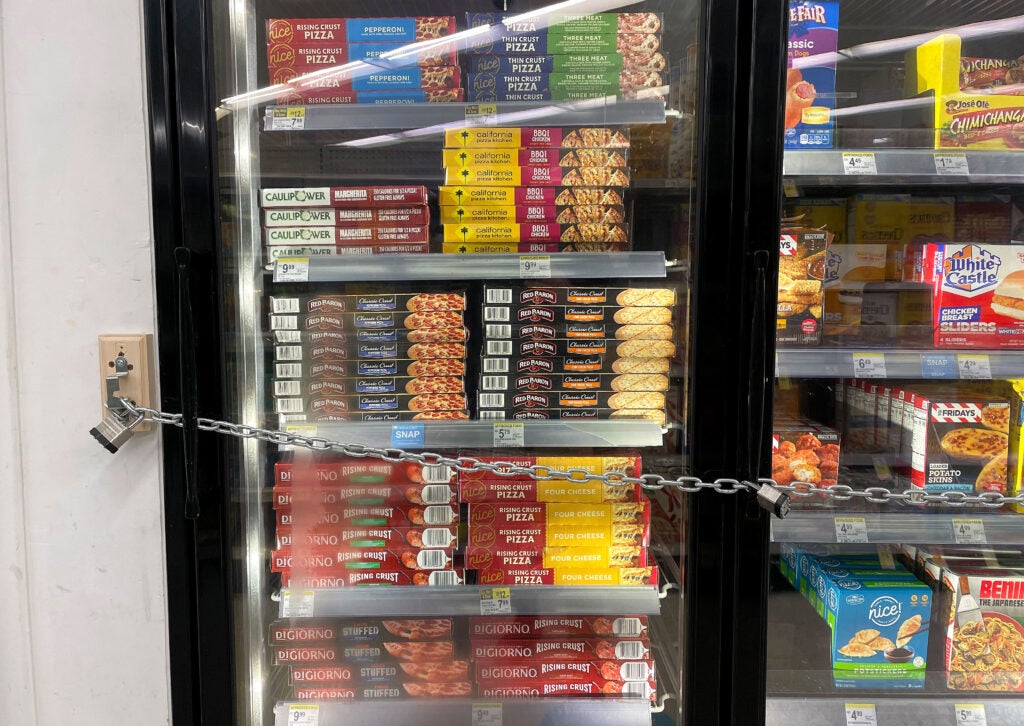The Preventable Downfall of San Francisco
Katrina Trinko /
Soon, I really can’t go back.
Growing up in a suburb of San Francisco, I loved visiting the city, being whirled into a world of noise and excitement. Over the years, I walked across the Golden Gate Bridge, explored Chinatown, prayed at Mission Dolores, heard music at Davies Symphony Hall, and rode a trolley up and down the hilly streets.
I meandered around the Sutro Bath Ruins, stared at the safety pin “art” sculpture at the DeYoung Museum, and appreciated the whimsy of the street artists, most notably the “Bush Man,” who costumed himself as a bush near Pier 39 and startled unsuspecting tourists.
But what brought me the most to San Francisco over the years was the shopping, the chance to peruse a dizzying variety of clothes and other items.
We’d board BART, the local metro train, and be whisked down the tunnel under the Bay. We’d emerge at the Powell Street Station, and walk a few steps into the huge mall, where stores clustered around a giant open atrium, escalators ribboning around the circular gap.
Sometimes we’d go straight up to Nordstrom, which owned the top several stories of the mall. Other times, we’d wander out, see the trolley stop by the Gap, and walk a few streets up, sometimes with a quick stop at H&M, to the Union Square Macy’s, which occupied an entire block. We’d meander through the huge floors of clothing, purses, and china, sometimes stopping for a coffee at the Starbucks that overlooked Union Square or for dessert at the rooftop Cheesecake Factory.
Soon, only the trolley will be left.
Nordstrom shuttered in August, transforming the top half of the mall into a ghost town. Gap and H&M both closed in recent years. Nor are they outliers: Out of the 203 stores operating in Union Square in 2019, only 107 remained as of May, reported The San Francisco Standard.
Just last week, Macy’s announced it plans to close its iconic location on Union Square, where it’s been since 1947.

For years, Bay Area residents have flocked to the Macy’s in Union Square, pictured Nov. 9, 2023, for Christmas shopping. (Photo: Kimberly White/Getty Images for Macy’s Inc.)
What has happened to the downtown of one of the most beautiful cities in America?
Well, the pandemic happened—and according to reports, foot traffic in the area has never really recovered. But more glaringly, crime happened. No, Union Square has never been, at least in my memory, a place you could mistake for Disneyland. But it was only in the 2020s that you heard regular stories of shoplifting, of an employee facing a machete-wielding man, of a mob bursting into luxury shop Louis Vuitton and grabbing goods, and of a car purposefully driving into Dior and thieves snatching items valued at $275,000.
Unsurprisingly, San Francisco Mayor London Breed, no disinterested party, pushed back on the idea that crime contributed to the decision by Macy’s, telling the San Francisco ABC affiliate that there had been a “significant decline in crime” between Nov. 20 and the end of the year. (Macy’s executives haven’t attributed the decision, which comes amid the closings of 150 Macy’s locations, to crime.) San Francisco put a heavy police presence in Union Square at the end of 2023 during holiday shopping.
But crime seems to be increasingly on San Franciscans’ minds. That’s not surprising, as residents have had to endure not one, but two pro-criminal George Soros prosecutors as district attorney: George Gascon from 2011 to 2019 and Chesa Boudin from 2020 to 2022. Crime got so bad in 2022 that the progressives in the city recalled Boudin from office.
In a 2023 survey conducted by the city, residents gave San Francisco the lowest safety rankings since 2002. Only about a third of San Franciscans said they felt safe walking at night, a sharp drop from 2019, when over half said they did.
On Tuesday, locals will vote on two measures related to policing—one that would increase the mandatory number of police and possibly impose a new tax, and another that would increase the city’s ability to use surveillance to catch criminals.
But even if there’s been a recent improvement, the entire Union Square area, once a shopping mecca, has been plagued by crime in recent years.
At the Ted Baker designer clothing store in Westfield San Francisco Centre, the same center Nordstrom was in, “employees locked the doors and someone banged on them, ‘threatening to bring a gun to shoot everyone, and telling our team that they will wait for them and rape them on their way home,’” reported the San Francisco Chronicle in 2023, quoting an email from a Ted Baker executive.

Westfield San Francisco Centre sits nearly empty on June 14, 2023. Westfield Group, which owns the shopping mall at 865 Market St., stopped making payments on a $558 million loan weeks after anchor tenant Nordstrom announced it would pull out. (Photo: Justin Sullivan/Getty Images)
The parent company of American Eagle, a teen clothing chain with a location in that same shopping mall, is now suing the owner, Westfield Group. The legal complaint states that “between May of 2022 and May of 2023, American Eagle employees reported over 100 significant security incidents, which include incidents of violence, aggressive guests, and thefts.”
“On multiple occasions, patrons have brandished firearms while verbally assaulting the store’s employees,” the complaint, as reported by SF Gate, continues. “American Eagle employees have suffered multiple physical attacks and assaults. In one instance, a patron even threatened American Eagle staff with a machete.”
Jeffrey’s Toys, a small business in the Union Square area, also recently announced it was closing. The reasons for the demise of the family-owned store, an inspiration for Pixar’s “Toy Story” movies, were multiple, but among them were “the perils and violence of the downtown environment,” according to Ken Sterling, a lawyer representing the owners, the Luhn family.
Matthew Luhn, one of the owners, acknowledged in a December interview he had had to call out shoplifters in front of his daughters. One of his employees, who had worked there five years, quit after she was “pushed … against one of the store’s walls and [an intruder] tried to stab her,” reports SF Gate.
Macy’s was hardly immune from crime. Employee Steve Dalisay estimated to the The San Francisco Standard that he sees four blazers, 10 wallets, and 20 briefs stolen a day. Another employee told the San Francisco news outlet that theft at this Macy’s was in the millions. Drug users and teens targeted the store for theft, one employee claimed.

Restaurateur Andy Yang raps about his city’s decline in “San Francisco Our Home.” (Photo:
ZHONG.TV YouTube channel)
Nor is it just the downtown affected.
“Yo, this is the owner of Kung Food Restaurant/After I got broken into seven times … I ain’t got no choice but to record this diss track,” raps Andy Yang in a December video, which has racked up 68,000 YouTube views as well as attention from local news. His restaurant, near Alamo Square, is a couple of miles from Macy’s.
“I’m just a man trying to provide for my son and my daughter/In the city without law and order,” raps Yang, who goes by the moniker Chino Yang for the video.
Last July, local ABC affiliate reporter Luz Pena visited a Walgreens drug store in the Richmond district of San Francisco. “Within the first hour of being at Walgreens on Geary Boulevard at 17th Avenue in San Francisco, we witnessed multiple shoplifters,” she wrote.
So bad was shoplifting that the store strung chains across the doors of freezers to secure them. (Customers could press a button for an employee to liberate their frozen food.)

A chain with padlocks secures freezer doors at a Walgreens store on July 18, 2023, in San Francisco. The Walgreens store has locked its freezers with chains and padlocks to thwart shoplifters who steal frozen pizzas and ice cream. (Photo: Justin Sullivan/Getty Images)
City officials have pushed back against the narrative that San Francisco is a crime-ridden hellhole.
But locals aren’t stupid. During George Gascon’s tenure as district attorney, rapes, aggravated assaults, and other violent crimes exploded, as detailed in the book “Rogue Prosecutors: How Radical Soros Lawyers Are Destroying America’s Communities.”
The authors, my Heritage Foundation colleagues Cully Stimson and Zack Smith, report that in the five years before Gascon took office, there was an average of 151 rapes per year. (The Daily Signal is the news outlet of The Heritage Foundation.) In Gascon’s final five years, there was a shockingly high average of 346 rapes per year, despite the fact that crime rates across the country had been dramatically falling.
Similarly, in the five years before Gascon took office, an average of 2,384 aggravated assaults occurred per year. In his last five years, the average jumped to 2,614 such assaults per year.
Chesa Boudin doubled down on pro-crime policies when he became the city’s district attorney. Thefts from vehicles exploded, rising 39% from 2020 to the end of 2021, and rising the same amount the next year. That’s because Boudin, like other rogue prosecutors, decided not to prosecute such “quality of life” crimes.
Smash-and-grab thefts exploded also across the city because Boudin decided not to prosecute anyone for theft under $950 per incident. Predictably, the result was open season on retail stores for brazen thieves.
San Franciscans have had to endure 11 years of pro-crime, anti-citizen district attorneys. This has created a culture of violence and indifference to violence. But it hasn’t stopped Breed, a Democrat, from trying to spin the narrative as mayor.
A January press release from the mayor’s office boasted, “In 2023, overall crime was at its lowest point in the last ten years, other than” in 2020. It noted that in the fourth quarter of 2023, “property crimes dropped 34% compared to the same time period in 2022.”
The press release also cited a study from the Council on Criminal Justice, which found that “[a]fter a large spike from September 2021 to April 2022, San Francisco returned to pre-pandemic levels” for shoplifting rates. The study presented San Francisco as in the middle of the pack among American cities when it comes to shoplifting rates.
Yet the horror stories keep happening.
Just a few weeks ago, Cow Hollow business Fredericksen Hardware decided to test a new method to deter shoplifting: asking would-be shoppers to wait until an employee is available to personally escort them through the store. Store manager Sam Black told The San Francisco Standard that he was dealing with the theft of six pans a week. “Staff now bolt just one pan into the wall for display purposes and keep the rest of the stock hidden away,” reported the Standard.
Is this how we want small businesses to function?
Is this how we think we should shop—asking employees to spring open chains securing doors and being escorted around with an employee/security guard when we want to browse?
Of course not.
Yes, no city stays great by staying stagnant. But what’s happening to Union Square and San Francisco’s larger shopping district isn’t healthy churn as some businesses thrive and some fail, as consumers’ interest waxes and wanes. This isn’t normal change; it’s the end of an era.
Perhaps San Francisco will police aggressively again, and new businesses will dare to try setting up in Union Square, owners hoping they’ll never have to console an employee who is held up at knifepoint.
Perhaps San Francisco District Attorney Brooke Jenkins, who seems committed to enforcing the law and cleaning up the mess left by Gascon and Boudin, will be successful. But she can’t change overnight the culture the two elected prosecutors, and the San Francisco City Council, created over the past decade.
This purge never needed to happen. There was no reason San Francisco’s downtown, just like others across the nation, couldn’t have had a gradual evolution, one that allowed me someday to see and point out some of my childhood favorite places as I took the next generation shopping. There was no reason crime had to happen, no reason that justifies the terror that ill-paid retail employees have been put through by violent and/or horrifically mentally ill thugs.
This was preventable. But now, it’s too late.
Editor’s note: This article has been corrected to reflect that George Soros does not fund the Council on Criminal Justice.
Have an opinion about this article? To sound off, please email [email protected], and we’ll consider publishing your edited remarks in our regular “We Hear You” feature. Remember to include the URL or headline of the article plus your name and town and/or state.
